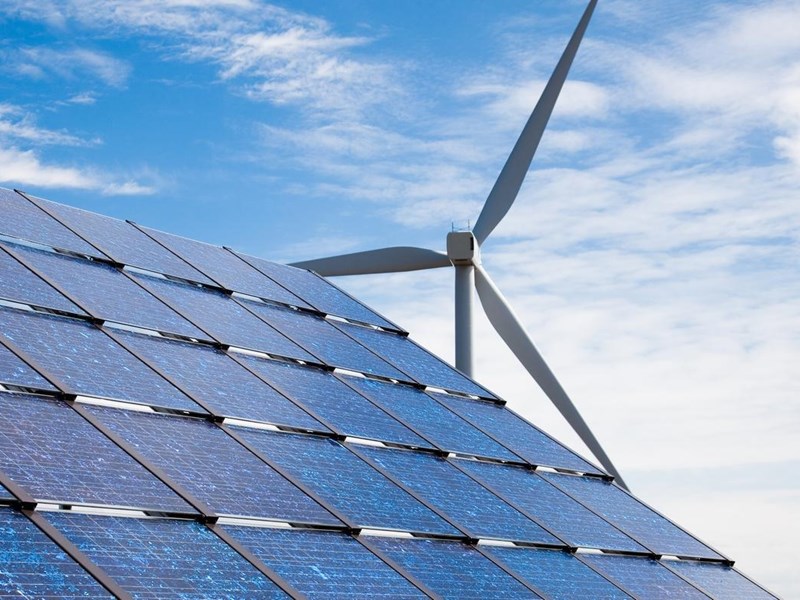与我们分析师联系
Net zero offshore wind bids in UK’s latest tender: the outcome the sector needed?
Challenges in AR5 auction spark calls for government action to revitalise the UK’s offshore wind sector. This is not the outcome governments wanted, but perhaps the one the sector needed.
3 minute read
Søren Lassen
Head of Wind

Søren Lassen
Head of Wind
Søren tracks, analyses and forecasts value chain dynamics, technological advancements and the market outlook.
Latest articles by Søren
-
Opinion
The Danish government charts course through offshore wind headwinds
-
Featured
Wind: predictions for 2025
-
Opinion
Industry divergence on costs and turbine sizing manifests itself in the first commercial floating wind tender
-
Opinion
Offshore wind energy: what to look for in 2024
-
Featured
Wind 2024 outlook
-
Opinion
Elevated subsidies enable offshore wind to end 2023 on a high note
The latest UK Contracts for Difference (CfD) auction round, known as Round 5 (AR5), has left the offshore wind industry reeling. While many expected this outcome, seeing no bids from offshore wind projects in the tender has sent shockwaves through the sector and raised questions about the future of renewable energy in the UK. While it may not be the result the government had hoped for, could this be the jolt the industry needs to steer it in a more sustainable direction?
The UK has long been a global leader in offshore wind energy, with the largest operational fleet outside of China, and securing its position with 42% of the world's operational capacity by the end of 2022.
Additionally, the UK government awarded a staggering 7 gigawatts (GW) of offshore wind projects in the previous year's tender.
However, the disheartening lack of bidders in AR5 can be attributed to a combination of factors, including a notably low administrative strike price (bidding ceiling) and other contextual challenges.
What drove bidders away from this year’s tender?
One crucial factor contributing to the absence of bidders was the low administrative strike price set in the tender. This, coupled with the other contextual factors listed below, played a significant role in the outcome:
a) A limited pool of eligible bidders: The pool of eligible bidders was restricted, consisting exclusively of experienced players in the offshore wind sector.
b) Revenue challenges: The Contract for Difference (CfD) mechanism, while providing revenue stability, also limited revenue potential compared to previous projects, such as those in AR4.
c) Market conditions: Projects scheduled for construction between 2026 and 2028 would require developers to secure new supply contracts at potentially elevated prices due to tightening supply and demand balances.
d) Anticipation of improved conditions: Developers are anticipating more favorable conditions in the upcoming AR6, following government announcements about changes to the tender structure.
This situation represents a significant setback, but it is not an isolated incident. Challenges in the offshore wind sector have been mounting for years, with suppliers feeling the pressure since 2016, and developers now experiencing the repercussions. Most notably, Orsted recently reported impairments of up to $2.3 billion for its US pipeline. Moreover, after seven years of declining subsidies, governments themselves are beginning to grapple with the consequences, including offtake cancellations in the US and the UK, and now an undersubscribed tender.
A push towards a net zero future
While the current scenario is less than ideal, it may serve as the catalyst the sector needs to recalibrate and move toward a more sustainable future. The high demand projected for offshore wind between 2028 and 2032 underscores the urgency of the situation. To reignite growth and support the energy transition, the UK government should consider taking the following steps:
- Increase ceiling prices: Raising the bidding ceiling would make projects more financially attractive to developers, encouraging participation and investment. In turn, it would also allow for greater margins across the supply chain.
- Streamline permitting: Accelerating the permitting process for the remaining fleet of projects would expedite their development and deployment.
- Introduce non-price criteria: Rewarding developers for bringing their projects online ahead of schedule could incentivize timely completion and reduce supply constraints in the critical 2028-2030 period where other governments also hold ambitious plans for offshore wind deployment.
By taking these proactive measures, the UK government can not only bring the nation closer to its 2030 renewable energy targets but also support job creation and enhance energy security. Moreover, these actions could have a positive ripple effect, freeing up supply capacity in the 2028-2030 period to allow for more deployment of offshore wind by 2030.
You can read the full results of the UK’s AR5 here, and find out more about how we can chart a sustainable course for offshore wind here in our latest Horizons piece.







